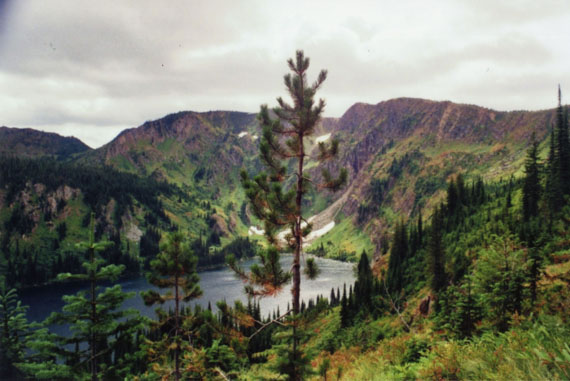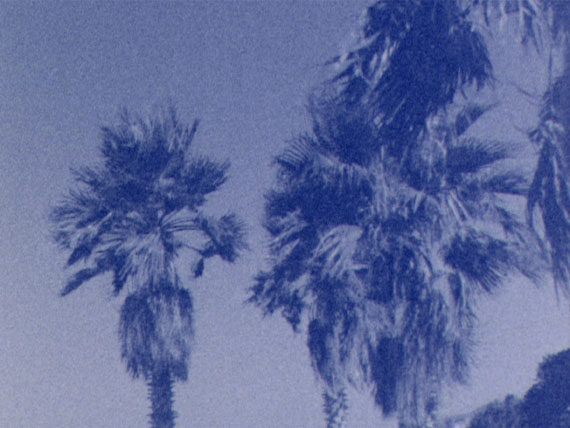
Heart Lake, Montana, 2011
Courtesy the artist
TERRA INCOGNITA
Perception of Landscape Today / Wahrnehmung der Landschaft in der Gegenwart
Jocelyn Catterson » Daniel Gustav Cramer » Alex Grein » Talisa Lallai » Jim Mangan » Lukas Marxt » Daniel Piaggio Strandlund » Birde Vanheerswynghels »
Exhibition: 14 Mar – 14 Jun 2015
Fri 13 Mar 19:00

KIT - Kunst im Tunnel
Mannesmannufer 1b
40213 Düsseldorf
+49 (0)211-89 20 769
kit@kunsthalle-duesseldorf.de
www.kunst-im-tunnel.de
Tue-Sun 11-18

El mar de Liguria, 2014
Courtesy the artist
TERRA INCOGNITA – Contemporary Perception of Landscape
With Jocelyn Catterson, Daniel Gustav Cramer, Alex Grein, Talisa Lallai, Jim Mangan, Lukas Marxt, Daniel Piaggio Strandlund and Birde Vanheerswynghels
Exhibition: 14 March ‐ 14 June, 2015
Opening: Friday, 13th March, 7 pm
Nature is the origin of all life and its presentation appears to be one of the most traditional pictorial genres throughout history: landscape paintings. This exhibition focuses on the current trend among young artists to address the subject of landscape as precise as possible, yet still subjectively.
In terms of historic cartography, Terra Incognita means places that - according to the mapmaker - had not been discovered at that time but were expected to exist. Ever since photography got invented, the 19th century’s explorers and pioneers used this new and convenient medium to "document" formerly undiscovered and exotic areas in realistic form. However, in the first place, the easily reproduced photos served as powerful multiplier of knowledge. It took only seconds to look at them and impart impressions, emotions and present specific situations. A kind of knowledge about foreign landscapes that was mainly derived from pictures and images was thus shaped. These days, everybody can - in real or by digital means - access just any part of the world, no matter how far away it might be. More than ever before, photos are used to present information and statements quickly. Both, in media as well as in art this trend becomes obvious in the dialog regarding photography.
The artists who exhibit at KIT present works that respond to this trend and call for a specific visual sensitivity. In this context, photography acts as starting point, as tool, or as part of the artistic activity. The artists approach the medium in various ways. Some of the works shown are made from material found by the artist; others are video installations or traditional photos. However, all works are characterized by a respectful approach to nature’s super-power. In a time in which reality is frequently -designed or even artificial, they convey increased awareness. The offer the viewer possible answers to the crucial question on the relation between man and environment in the 21st century.
The exhibition will be accompanied by a catalog in German and English that provides images of the installations.
�

Captive Horizon, 2014
Videostill
Courtesy Schmidt & Handrup, Cologne/Berlin
"TERRA INCOGNITA – Wahrnehmung der Landschaft in der Gegenwart"
Mit Jocelyn Catterson, Daniel Gustav Cramer, Alex Grein, Talisa Lallai, Jim Mangan, Lukas Marxt, Daniel Piaggio Strandlund und Birde Vanheerswynghels
Ausstellung: 14. März bis 14. Juni 2015
Eröffnung, Freitag, 13. März, 19 Uhr
Natur ist der Ursprung allen Lebens und ihre Darstellung manifestiert sich in einer der traditionellsten Bildgattungen der Geschichte: dem Landschaftsbild. Die aktuelle Tendenz junger KünstlerInnen, sich dem Thema Landschaft möglichst präzise aber auch subjektiv zu widmen, untersucht diese Ausstellung.
Terra Incognita bezeichnete in der historischen Kartographie Orte, die – gemäß dem Kartographen - noch nicht entdeckt worden waren, aber deren Existenz vermutet wurde. Seit der Erfindung der Fotografie galt das neue, handliche Medium für Entdecker und Pioniere im 19. Jahrhundert als notwendiges "Dokumentationsgerät", das die bisher unentdeckten und exotischen Landstriche realitätsnah festhielt. Vor allem aber war dieses leicht zu reproduzierende Foto ein gewaltiger Multiplikator von Wissen. Innerhalb von Sekunden der Betrachtung waren Eindrücke, Emotionen und Situationen vermittelbar und prägten damit ein Wissen über fremde Landschaften, dass sich vornehmlich aus Bildern zusammensetzte. Heute ist jeder noch so entfernte Punkt der Erde jedem Menschen real oder auch digital zugänglich und das Foto dient mehr denn je der schnellen Information und Aussage. Diese Entwicklung ist im Diskurs der Fotografie sowohl in den Medien als auch in der Kunst spürbar.
Die im KIT ausstellenden KünstlerInnen zeigen Werke, die auf diese Entwicklung reagieren und eine spezifische Sensibilität des Sehens herausfordern. Die Fotografie dient hier als Ausgangspunkt, als Werkzeug, als Teil der künstlerischen Arbeit. Die KünstlerInnen gehen auf vielfältige Weise mit dem Medium um. Zu sehen sind Arbeiten aus gefundenem Material, Videoinstallationen und klassische Fotografien. In allen Werken ist der respektvolle Umgang mit der Übergewalt der Natur spürbar. Sie vermitteln eine geschärfte Wahrnehmung in einer Zeit, in der Realitäten oft konstruiert und sogar überkonstruiert werden. Dem Betrachter bieten sie mögliche Antworten auf die entscheidende Frage, in welchem Verhältnis Umwelt und Mensch im 21. Jahrhundert zueinander stehen.
Zur Ausstellung entsteht ein Katalog in deutscher und englischer Sprache mit Installationsansichten der Ausstellung.
�

Untitled (Palm Trees) # 1, 2014
Film still
Courtesy the artist